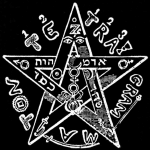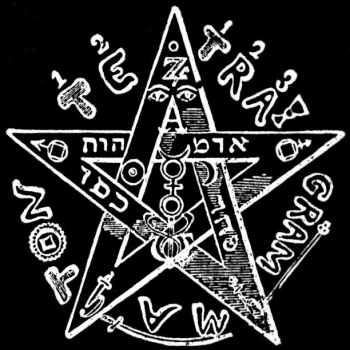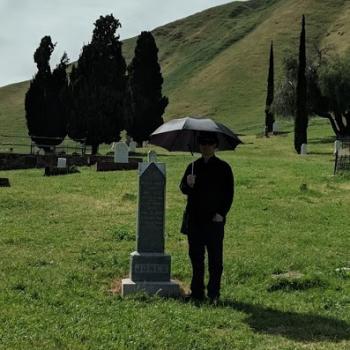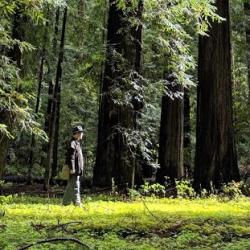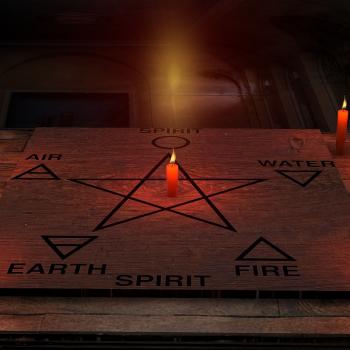Land spirits are an important part of paganisms around the world. These are spirits associated with places, whether they might be as small as a stream, or a tree, or as large as a mountain, a village, or a country.
In Europe, such spirits go by a number of names, like the elves and faeries in Britain, and the alfar and landvaettir in much of Scandinavia. But these familiar/well-known examples are just the tip of the iceberg. We can find land spirits almost everywhere, from the Celtic clootie well, to the Korean mudang’s tree, to the Mongolian oboo.
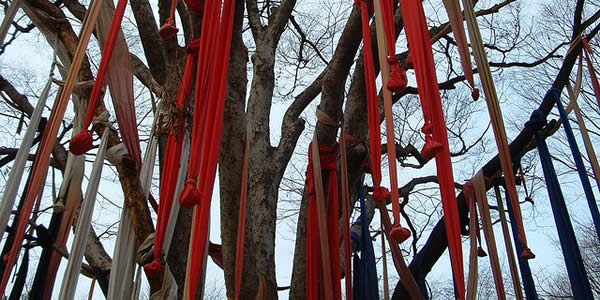
Similar patterns can be found around the world. In some parts of Indonesia, clearing land for farms may require sacrifices for the spirits who live there so that farmers will be left unharmed. Specific trees or stones may be left alone, or simply warned ahead of time so that resident spirits have a chance to vacate before the land is disturbed. Spirit-workers, whether mediums, diviners, or priests, often have a role in determining if there is a problem, and then resolving it.
Sometimes I find it strange that we don’t see this pattern much in modern America. Willy-nilly, we build with virtually no regard for the land at all. We shape the land and use it, but find it hard to believe that the land shapes us in return. True to our pioneer myth, we generally see the land’s power as passive, ready to be put to use by a strong, firm hand.
Ignoring those who already inhabit the land has been part of our mythology. But as we move from invaders to inhabitants ourselves, this changes. Knowing how to live in harmony is a skill, and one that many pagans embrace.
Moving In
I have moved a fair amount in my life. It wasn’t always like this, but now when I move to a new place, I survey the local land and the local “mythologies.” I then go and find an appropriate location to introduce myself to the land spirits.
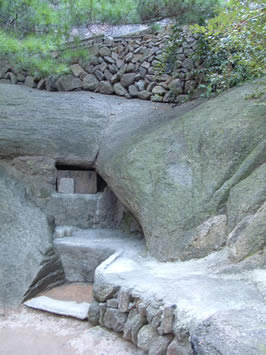
When my wife and I lived in Korea for a year, our first weekend trip was to Inwangsan, a mountain associated with Korean shamanist tradition (muism). We left some soju at one of the many impromptu shrines dotting the mountainside, and introduced ourselves to the spirit of the mountain. I must admit, the powerful spirit was singularly unimpressed with our presence.
Inwangsan is an interesting place. Both Buddhist and animist shrines on the mountain are still active, and there was a shop on the mountain that sold a variety of ritual objects. On the way down the mountain, we ran across a woman, probably a mudang (Korean: shaman), ritually tearing cloth. And no, we didn’t stop to snap a picture.
Years later, when we came to the San Francisco Bay Area, my wife and I traveled to the top of Mt. Diablo. This mountain is in many ways the spiritual equivalent of Inwangsan; it has been a holy mountain for the people who have been here ten or more millennia.
We traveled up the mountain and introduced ourselves to all the lands surrounding. Perhaps because of the park system’s strict policy about littering, we neither found shrines nor started one. We simply found a small knoll at the top, and stopped to say hello. We shared some water with some plants there, and asked for permission to stay in the area.
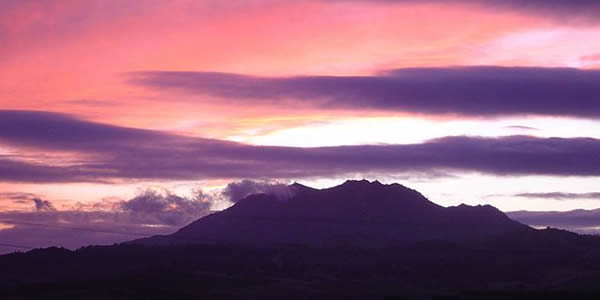
Transferred from en.wikipedia; transferred to Commons by User:Logan using CommonsHelper
Licensed under Public Domain via Wikimedia Commons.
Wherever we go, the landscape is dotted with places like this. Finding them can be a matter of listening to old stories and keeping your eyes open. As it turns out, Mt. Diablo was named by the Spanish in the area, on account of local spirit beliefs.
A Note of Caution
While recognizing the power of the land spirits is only polite, that doesn’t necessarily mean that you need to dress the part. Wearing any kind of indigenous clothes for ritual is something you should only do when required by someone who has the “proper” authority through that tradition.
On the other hand, be respectful. When going to a sacred site, it might be appropriate to wear long pants and long sleeves, and to take off your hat when speaking with your betters. These are marks of respect in Western culture, and will generally be recognized and appreciated.
Offering some grain, salt, wine, beer, tobacco, soju, or whatever the local spirit-neighbors like is only polite. Dressing up in their clothes to do so is seriously stalker-y.
The Best Way to Have a Good Neighbor Is to Be One
Living well somewhere means getting along with the land spirits just as much as it means getting along with your other neighbors. Being pleasant and non-disruptive is a start in fostering harmony with the land.
When you move into a new place, heading over to your neighbors and introducing yourself is usually the polite thing to do. This is true whether they live in the next apartment or the old tree down the road. If they’ve lived there ten years, you might learn a thing or two. If they’ve lived there three hundred, so much the better!

Patheos Pagan on Facebook.

the Agora on Facebook
The Other Side of the Hedge is published on the first and third Sunday of the month. Subscribe via RSS or e-mail!
Please use the links to the right to keep on top of activities here on the Agora as well as across the entire Patheos Pagan channel.

